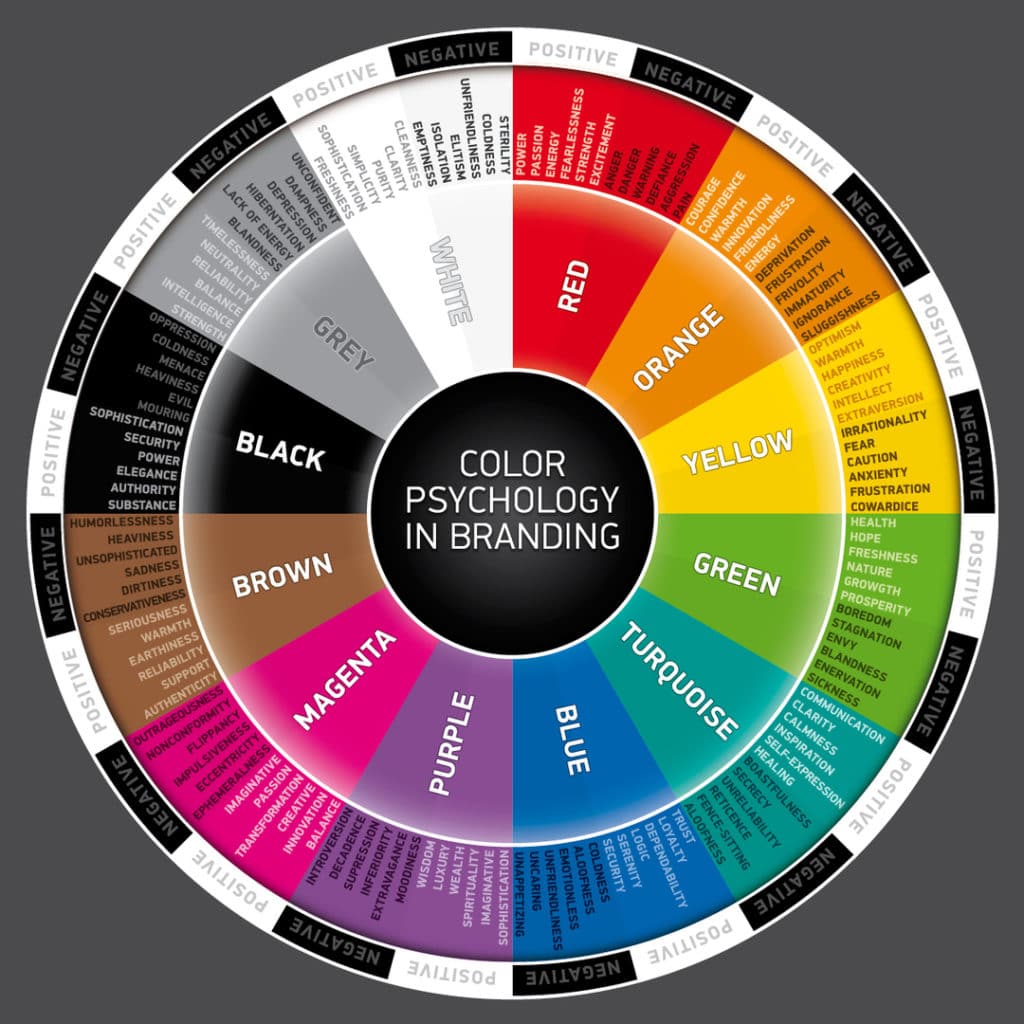16 Steps to Building a Branded Website
Table of Contents
Why do I need to build a branded website?
Your purpose in building a branded website is to stand out from your competitors. The best way to stand out from your competitors is to create a great user experience. A great user experience is developed by integrating design, usability, branding, and function. What does that mean?
Useability
- The site must be easy to use
- The user must be able to complete actions logically and quickly
- Content must be integrated and flow together logically and in a way that the user can intuitively follow
Functionality
Technically your site should:
- Be responsive and designed with the idea that browsing will generally begin on a smart phone and conversions will occur on a desktop or laptop
- Fast loading. People will bounce off your pages if your site loads slowly
- SEO optimized. These days a great deal of SEO is dependent on the content of your pages and that is why you must deliver high quality optimized content that will please users and rank with search engines
Design
- Your design will depend on your targeted audiences, the way they consume information, interact with pages, in addition to their design preferences
What will branding my website do for my business?
Branding sets you apart from your competitors. It consists of your philosophy, your personality, and your voice. It also communicates the value you bring to the customer. Your website is generally the first impression and overview a user will get of your entire business. Branding should:
- Make you memorable
- Build trust
- Build loyalty
- Define your image
- Give a clear overview of your business
What branding is not
Branding is not about your logo. Gone are the days when branding consisted of slapping your logo all over your business cards, website, product, and stationary. Branding is much more involved and is going to require planning and thinking, not just about you and your business, but about your end user. A logo serves as a symbolic representation of your brand that can lead to quick identification. In itself, it is relatively meaningless.
What is branding?
Your goal is to create a memorable experience for the consumer. Something that they will love, choose, or identify with. A product is never thought to be just a product. Instead, it should connote a lifestyle and confer that identification on the user.
Likewise, services should never simply be listed on your website. The content you use to describe your various services should answer questions and solve problems for the user.
Brand Image
A brand image makes you memorable. It consists of elements that are part of your overall image and that are incorporated in the design of your website. Brand imaging consists of:
Visual Branding
- Fonts
- Color Palettes
- Relevant Images
- Iconography
- Interactive sections
- Videos
- Animation
- Filters
- Logo
Brand Voice
- Your voice
- Your story
- Your tag or theme line
- Your content
You must be consistent with these features. As your business evolves you can refresh these elements to stay relevant.
Where do I begin with the branding process?
Before you rush into building a website, you must consider a number of factors:
- You will need to create a consumer profile. If you have been in business for a while, you will already know who your clients or customers are
- You will need to research your competitors
- You will need to define your mission and your unique value proposition
Mature
Hipster
African American
LGBTQ+
Begin branding by creating an ideal consumer profile
Begin by creating a user profile of your targeted audience. Think about who you are speaking to.
What should I consider in defining my target audiences?
Create an ideal buyer persona (or more than one) consisting of:
- Gender / Sex
- Age
- Location (urban, suburban, rural, national, international, regional etc.)
- Education
- Income
- Job / Career
- Marital / familial status
- Communication preferences
- Goals
- Problems / Challenges
- Why they would, or wouldn’t, buy your service or product
Research your competitors
It is important for you to know who your competitors are for several reasons:
- You will want to know what they are doing right
- You will want to know what their weaknesses are
- You will want to pivot to improve your service and website
There are a number of services, such as SEMRush, you can use to analyze competitors’ online performance. You will want to:
- Understand where their traffic comes from: search results, paid advertising, social media
- Discover their top pages visited
- Find out the keywords they rank for
- Which blog posts get the most traffic and shares
- Examine their social media
If you are a local business, you will need to:
- Talk to people and get their feedback about your competitors
- Read online reviews
- Use their services to get a feel for how they function
Have a thorough look through their websites:
- Is it clear which goods and services they are offering?
- What is the user experience like?
- How easy is the website to navigate?
- Is it mobile optimized?
- Is their content engaging?
- Are their blog posts well written and informative?
- Are their social media platforms well developed?
Define your value proposition
You will have to define what makes you different and the unique value you bring to your customer or client. For example:
- Great service
- Your skillset
- Information and solving customer problems
- A great product
You can’t be all things to all people
- You should be authentic. If you ever think you can’t compete against the big players, you can emphasize that you are small, local, boutique, and offer individualized or personalized service.
- You should be transparent. Use photos of you, your staff, and your business. It will give people a sense of security and connection to know who you are
Pick your niche or focus
- Know which markets or gaps in the market you will cater to.
Define your brand position
This is the fun part, where you get to play around with a statement that defines your position in the market and your brand personality.
Brand Position
For example, in my business, I create branded websites for small business owners that convert. Unlike my competitors, I do big agency work without the overhead. Now you try:
We offer (Service or product) for (Target market) to (Value proposition). Unlike ( Our competitors), we (Do things differently).
Define your brand identity
Brand Identity
You can Google to find any number of guides that list adjectives that will describe your brand. You can also use those adjectives when actually describing your brand. For example:
Brand 1
Luxurious
Exclusive
Sophisticated
International
Urban
Mature
Classic
Cultured
Brand 2
Friendly
Helpful
Affordable
Reliable
Fast
Honest
Caring
Responsible
Brand 3
Green
Clean
Peaceful
Healthy
Natural
Holistic
Pure
Sincere
Knowing the psychology behind color theory is key to building a branded website
The advertising industry has spent billions researching consumer preferences. Fortunately, you can profit from their research by applying color theory to the design of your website.
Color influences mood and consumer responses. Studies show that when people look at a website, 60-90% of their subconscious judgments are based on color alone! Web designers tend to be younger men who prefer fully saturated colors, but those colors will not necessarily drive conversions or appeal to your target audience.
Psychologically, colors have both negative and positive connotations. And they come in shades, tones and tints. That is, the original color with black, grey, or white added to it.
Let’s take a look at our three brands above and decide which colors would work in the design of their corresponding websites.

Brand One
Are you are picturing an expensive make-up or accessory line from the listed adjectives? How about a designer line of clothing? Let’s create a consumer profile targeting a sophisticated city dweller in her fifties with a substantial discretionary income. You might be looking at the color wheel and wondering which color might be right for your product or service. The answer is: None in their pure form.
You could work with the warm side of the color wheel using oranges and yellows. When you further refine those colors you end up with gold, beige, camel, or caramel in various shades and hues. Offset with a soft white or grey cloud background, a soft charcoal footer, gold or silver accents, and feminine fonts, you will arrive at a look that speaks to luxury, sophistication and exclusivity. Alternatively, you could work with sophisticated tones of purple, silver, white and grey lavender.
Brand Two
Are you are picturing a local business? How about a mechanic, a plumber, doctor, or cleaning service? Nothing says dependability and trustworthiness like blue. But by choosing the wrong blue, you can end up with a website that is cold, clinical, or depressing. If you go too light, you can end up with either a babyish or a very old fashioned look.
Blue is the preferred color of both sexes but you must know how to use it and pair it effectively with other colors to appeal to your ideal segment.
Brand Three
Green. It could be an eco-cleaning product, a dispensary, an organic foods store, a holistic health site or any number of products that denote health, natural ingredients, social consciousness and environmental awareness.
Which colors should I avoid when branding my website?
There are some colors that are universally despised. The top three are:
- Dark brown
- Burnt orange
- Bubble gum pink
There are other colors which are just plain ugly, disliked, and out of date:
- Maroon
- Cream
- Aubergine (brownish-purple)
- Puce (less purple and more brown than aubergine)
- Olive green
- Neon yellow, but only for some demographics
Colors that are difficult to work with and that are overwhelming in anything but small doses:
- Red
- Black
Tedious:
- Grey. A perennial favorite with techies. Particularly unattractive when used with orange and brown.
Color preferences by generation
Generation Z > Yellow and happy pastels
Millennials > soft greyed out colors, like dusty pink, cantaloupe, blush, lavender on the one hand and bright supersaturated, neon colors on the other.
Generation X > indigo, violet, shades of green, black, sandy colors and charcoal greys.
Boomers > azure, greenish-blue, jade green, grey lavender, sophisticated purples, silver.
Silent generation> There are 23 million members of the silent generation, born between 1925-1942. They are not techy but they are the best educated and wealthiest generation. According to Forbes, the silent generation hold roughly 1.3 times the amount of wealth as baby boomers, more than twice that of Gen X, and 23 times that of Millennials. If you are marketing to them, it will be probably be through traditional means and not digitally. This group is under targeted and if you are the in travel, leisure, or medical sectors, you should include them. They like classic, elegant and traditional colors, such as rich dark reds, greens, yellows, camel, and taupe. Additionally, use fonts and font colors that are easy to read.
Tell your story
Your entire website is telling a story. A great story is told through words and images. When you get to your About pages and talk about your personal journey, you have an opportunity to connect emotionally with the client or customer. When they are emotionally connected to you or your product, they will follow through with a call or purchase.
You will never be able to please everyone, but you will connect with your tribe eventually. Concentrate on the following:
Website:
- Transparency – be the face of your business, talk about your inspiration, your goals and the challenges you have overcome
- Write in a voice that reflects your brand personality
- Be informative
- Keep it short
- It’s really all about what you are going to do for your customer or client and how you will solve their problems
- Pepper your pages with client testimonials. Don’t keep all the testimonials on a single, separate page
Your Story:
You want to tap into your market’s deepest needs and create a solution, while presenting yourself as someone who has overcome challenges and who has a passion for delivering results.
One of the most powerful stories I have run across is that of a digital marketer whose website generates $500K per month. Her story: She was a divorced mother with heavy credit card debt whose only desire was to generate an income from home in order to support and care for her children. After a stint in a homeless shelter, she embarked upon her venture. Working backbreaking hours, she developed her product, which she sells on Shopify. Additionally, she offers courses, which teach her audience how to achieve an independent income.
She taps right into the stay at home mommy market with the answer to the problem of earning money and taking care of children. Nothing on her site is upscale or intimidating, and the content is written in a simple, powerful manner. Of course, she ranks for all the major keywords in her market.
When writing your copy use long tail keywords
SEO is an involved topic, which I will cover in depth in future posts. Suffice it to say, that on page SEO is of the utmost importance as search engines get smarter. Furthermore, 60-72% of all searches are being conducted from smart devices. People speak into their devices in full sentences, which is the reason your content has to be optimized for voice searches if you have a local business.
You will be able to do that by using longtail key phrases on your pages and posts. Use longtail keywords in your:
- Post title
- The Meta-title
- SEO meta description
- The first paragraph of your content
- Somewhere in the body of the copy
Another way to optimize for voice search is to write in a question and answer format. When you organically Google questions or use a service such as Answer the Public, you can discover what people are asking about and format your articles by answering those questions.
Let’s take a look at what a hot topic like CBD generates:

Find your competitors' keywords
When researching your competitors’ keywords, you need to discover:
- What they rank well for
- What they fail to rank for
How will you use competitor keyword research?
- Discover and deploy target keywords competitors are not using
- Compete for the same keywords but have better content and offer a superior user experience
- Find the longtail keywords that your competitors are not using
You can use keyword tools such as:
The best thing about starting out is that you have all this information in front of you and you can see where your competition is succeeding or failing. You can use that knowledge to your advantage. You are in a growing phase initially but as long as you are delivering useful results, you will rank eventually.
Use words and phrases that will tap into consumers' desires
Just as you used words to define your brand, you will use words and images that tap into people’s unconscious desires in order to sell your service or product. Fortunately, the advertising industry has done most of the heavy lifting already by identifying keywords that trigger emotional responses in consumers.
These types of words are especially important in email subject lines, once you have an email list.
Brand 1 Exclusive
Limited
Rare
Few
Authentic
Unique
Brand 2 Premium
Hand crafted
Small batches
Pristine
Fresh
State of the art
Brand 3 Affordable
Bargain
Best seller
Tested
Money back
Painless
Additionally, here are words you can use to create urgency, motivate the buyer, and stop them in their tracks as they are skimming the page:
- Stop
- Sale
- Deal
- Announcing
- Offer
- Explore
How can I become a good writer?
The best way to become a good writer is to be a good reader. Writing isn’t easy. I’ve written on behalf of doctors, dentists, Realtors, architects and psychologists, and I can firmly attest that high levels of intelligence and education have no correlation to writing ability. There are several things to keep in mind when you begin writing content:
- Do your research
- Pick a catchy title for your post. Research indicates that asking a question or creating a list, i.e. 10 Reasons Why – gets more clicks
- Pick longtail keywords to use in headings
- Write in a question and answer mode. This will be extremely beneficial as voice search becomes prominent
- Organize your thoughts in a logical manner so that there is flow between sections
- Use transition words: However; first, second, third, lastly; for example, therefore; additionally
- Write at an 8th grade reading level
- Use a tone of voice that will appeal to your audience. For example, a skincare blog with a soft, friendly, nurturing tone is going to sound very different from a financial blog aimed at investors
- People skim, so headings and bullet points are something you need to implement
To learn how blog, read follow my tutorial, Blog like pro. You can also use tools like Grammarly, a free editing software, to help you. If you consider yourself hopeless at writing, record yourself speaking and use a transcribing software. If you are comfortable in front of the camera, then make videos. You can use a good smart phone initially before you invest in equipment.
Few of my female clients will get in front of the camera. They judge their physical appearance very harshly. Looks or a big belly never stopped men from seeking success. Good grooming and lighting, your knowledge and enthusiasm for your topic and your ability to solve user problems is what really matters.
Although you should choose the right social media channels for your particular business, keep in mind that Google owns YouTube, and will feature YouTube videos in organic search results. Therefore, developing your YouTube channel is a great way to drive traffic to your website. I will go into detail in a separate post how to use this channel properly.
Pick the best website builder for your branded website
I will compare the best builders and hosts in detail in future posts. For now, this is what you need to know:
1. WordPress.org – is my top choice but there is a learning curve. WordPress is open source, has tons of free plugins, and free or premium themes. You can move it from host to host if necessary. WordPress is customizable, secure, and the best platform for SEO. With outstanding page builder integration, such as Elementor, you will never need to code. Additionally, you own your website and your data. Choose the right host for you and follow the prompt to set your site up.
2. Shopify – is an e-commerce platform. With attractive templates, you can get started quickly with your online store. You can sell physical and digital products or services. Shopify excels for merchants who utilize drop shipping. The SEO is considered to be good for a hosted site builder.
3. BigCommerce.com – is an e-platform website builder for large stores. No coding required but there is a learning curve.
5. WooCommerce – is a an open source plugin for those who have a WordPress website that allows them to set up an e-commerce store with ease. The set -up wizard will prompt you through all the steps.
6. Squarespace – is a drag and drop builder that is best for creatives, such as photographers. The templates are geared towards visual displays but not text heavy websites. It’s a little harder to use than Wix and Weebly for beginners.
7. Wix – A drag and drop website builder with hundreds of templates. Mobile optimized, it is considered to be good for small business sites. Furthermore, the SEO component has improved recently.
8. Weebly – easy to use responsive themes. Limited customization unless you can code.
9. WebFlow – I haven’t tried it yet. It is geared towards professional web designers who create small business sites. Apparently it has a steep learning curve but should be familiar to those who use Adobe design software.
10. Drag and drop builders offered by various hosts – Upgraded and easy to use, most are limited in terms of design features, functionality, and SEO capability.
Designing your branded website
Things to keep in mind before getting to work on your branded website:
- Your website must be responsive, meaning it should look and function as well on a smart phone as it does on a big screen. Make sure that you are using a responsive theme or template
- Your website should be optimized for speed
- Your website should be interactive: allow for comments, reviews, and social sharing through interactive buttons
- The design of your website should be clean and uncluttered with plenty of ‘white’ or empty space
- Your contact information, and location, if relevant, should be featured – above the first fold.
- Include eye catching hero images
- It should contain easy to use call to action buttons
- It should incorporate video
- You should use beautiful high quality images. It is well worth the expense of hiring a professional photographer to shoot your product or create images of you and your team. If you can’t afford a photographer, ask a talented friend to help out.
- It should be immediately clear what you do or offer
- Include well written, SEO optimized content
- Incorporate fonts and typography that maximize the impact of the overall design
- Include multiple ways to contact you or your team. Phone, email, contact form, chat box, or booking service
Should I follow design trends?
The biggest trends of 2020 were:
- Dark mode
- Minimalist navigation
- Futuristic color schemes
- White framing around elements
- Collage style design
- Floating elements and shadows
- 3-D elements
Personally, I love all of these except for collage style designs which I think work better on social media posts. Will they be in fashion three years from now? We don’t know.
The main thing to keep in mind is that you are targeting certain demographics or groups. Design websites that will resonate with them.
Taking it further
So far, I’ve shown you the initial steps to designing a branded website. If you want to take it further, please follow the links and come back for future posts.




